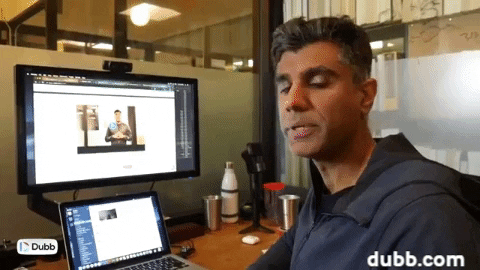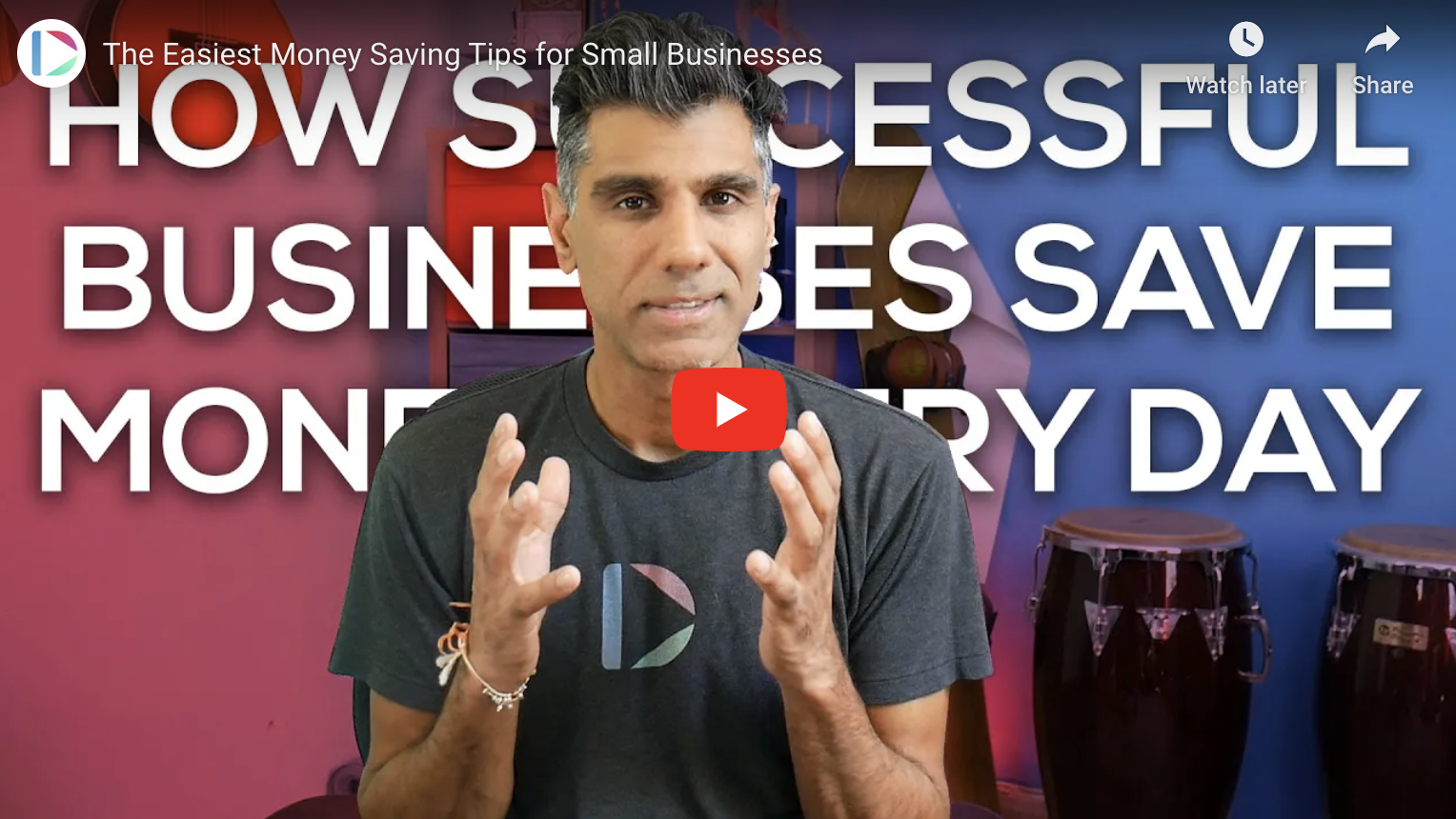Are you looking for some effective, yet easy-to-implement money saving tips for small businesses? While cutting costs can be important in essentially any macroeconomic environment, it has become all too relevant amidst Covid-19.
The great news, however, is that there are many money saving tips that we can implement right now that can put our businesses in better financial shape. Whether you just started your own small business or work for a rapidly growing business that is experiencing some hard times, this guide can help your business save some cash.
Cash Crunches and Other Financial Issues
As you likely know, there are so many benefits to starting a small business. This includes everything like the freedom to chart your own path, the ability to be more creative in your career, and, yes, the financial possibilities of running a successful business. Whatever your motivations for starting your own business (or joining a young business), these initial motivations can help you get through the inevitably stressful moments of small business life.
Yet while the startup and small business world is full of optimism, the realities can shock our systems. Everything from a “no” from a major investor or prospect to a key employee suddenly leaving the company can cause lots of stress in our lives.
That being said, cash crunches are some of the most concerning issues that we face in our businesses. Whether it is due to a key customer not paying its bills to a sudden revenue slowdown, these financial issues can put us out of business. Even if they don’t, we need to respond to them quickly to maximize our chances of survival. The last thing we want to do is burn cash.

The unfortunate news is that more businesses than usual are facing financial pressures. Covid-19 has created stress for everyone from the small corner store to the largest multinational corporations. Because of this, it is an excellent time to speak about some quick and easy way that your business can save some cash.
Before we do this, however, there is a key caveat. Pinching pennies and saving cash can only go so far. The life cycle of a business is overwhelmingly dominated by growth in both revenues and net profits. At some point, your business will find that it cannot cut costs any further. Instead, it will need to generate cash quickly or invest in future growth.
Granted, many small businesses are not at that point. Nonetheless, it is helpful to keep this in mind as you implement the money saving tips discussed in this post.
How Small Businesses Can Save Some Cold, Hard Cash
With that background in mind, let’s talk about some of those strategies to save cash. The great news is that these are simple strategies that you can implement every day.
Manage Your Tasks
This may sound simple or self-evident, yet focusing on task management can go a long way in helping your team save money. Task managers make it easy to understand what you and your colleagues are working on. Even if you are a solopreneur, a task manager can keep you organized and accountable so that you accomplish everything that is on your plate.
Task managers are especially helpful if you are trying to coordinate a large project with many moving parts. As a leader of your business, you need to keep your team up to date with everything. You need to reassure them and let them know the high priority tasks that are going to help your business grow. Task managers can help you with these critical things.
As a simple example, a task manager can help you stay organized when you are launching a new product or service. Everyone from the developers on your team to the members of your marketing and sales departments can stay on the same page. You can not only see each other’s tasks and deadlines, but comment on those tasks and deadlines as necessary. To think of it another way, a task manager is a “mission control” that gives you the pulse of your organization. The more you use it, the more that you can get out of it.

While you may need to spend some cash to invest in task management software, it can save you some substantial cash. This comes from the fact that you and your colleagues are being more efficient. In other words, you aren’t wasting time. You and your colleagues are focused on the right tasks and you are completing them according to agreed-upon deadlines. More efficiency and productivity not only helps you avoid unnecessary expenditures, but it can actually help your organization make more money.
There are plenty of task managers in the marketplace today. They include well-known names like Asana, Monday.com, and others. All of us at Dubb use Asana, but I encourage you to use the software that makes the most sense for you. But you don’t have to limit yourself to software that is strictly categorized as a “task manager.” Zoom or Microsoft Teams, for instance, are great tools that let you instantly communicate with each other. We would also argue that Dubb is a productivity tool, as it lets you leverage asynchronous communication with your colleagues and customers. Whatever tool that you choose to use, you should seriously consider an investment in task management software.
Make Original Content
This is one of my favorite ways for small businesses to save cash. Creating original, organic content is a cost-effective way to build brand awareness, make connections with your audience, reduce marketing expenses, and generate more sales.
No matter the sector or industry of your business, you and your colleagues cannot ignore marketing. There are plenty of large and small competitors. Not only that, but there are undoubtedly new, promising startups being launched in your industry. Amidst all of this, your target customers are constantly bombarded with information. Your marketing work needs to be stellar in order to get your prospects’ attention.
Because of this, there are some small businesses that choose to work with marketing firms. Others may not choose to work with marketing firms themselves, but they may spend significant amounts of money delegating their marketing work to someone else. They sit down with their partners, speak about the message they want to convey to their audience, and then receive a final product.
On the surface, it may seem more efficient to work with a marketing firm (or some other organization that can handle your marketing). After all, life as a small business owner is incredibly busy. There are so many tasks on your plate that you need to handle. If you can delegate that task away for a small fee, why wouldn’t you do it?
Ultimately, I believe that creating original content is more effective—both financially and non-financially. You can get more output with less input. Your audience will feel more attached to content that you, yourself create. You’ll forge strong bonds with them and they will trust you more. Moreover, you can create organic content in a much more economical way. All of this increases your chances of audience members purchasing your product or service while, at the same time, minimizing your marketing costs.
The key to leveraging these benefits by creating original content? It comes down to one key phrase:
View everything as a content opportunity.
We live in a world where content opportunities are everywhere. No matter where we are, we can pull out our cell phones and record awesome video content. In fact, the more exotic or interesting location that we are in, the bigger the opportunity is to create awesome content for your audience.
With this in mind, however, it can be easy to get intimidated. It sounds daunting because it seems like a lot of unavoidable work. It conjures up images of scheduling a certain time of day to create content, figuring out what to say, actually recording your content, editing it, and then distributing it for your audience. Like I said above, you’re likely extremely busy, so you may be struggling to find the time where you can fit in these tasks.
The good news is that your content creation process doesn’t have to be like this. The better strategy is to adapt what you are already doing into a content opportunity. It’s almost like taking the path of least resistance in that you are getting the dual benefits of whatever you are doing and content that you can later share with your audience.
At Dubb, we have developed a strategy that can help you easily create new content opportunities from what you’re doing. That strategy is called the Waterfall Method.
Embrace the Waterfall Method
The Waterfall Method is a content creation method that makes it easy to consistently create awesome content. We use it at Dubb and we are confident that you can use it in your own business.

At its core, you can think of the Waterfall Method like a real-life waterfall. As you know, a waterfall has a source of water at the top and then flows down to some other location. The water is constantly flowing down the waterfall, where it then disperses to some other area. While all parts of a waterfall are important, the source at the top is the most important. Without it, the waterfall wouldn’t exist.
With this background in mind, you’ll be able to quickly see what the Waterfall Method is. Essentially, it is a way to repurpose long-form content into smaller and smaller pieces of content. At Dubb, we like to think of the Waterfall Method as a way to clone ourselves. What happens is that you create a long piece of original content and then leverage that content many times and in many different ways. So instead of paying a marketing firm for individual pieces of content on an ad hoc basis, you can keep squeezing out value from a longer piece of content that you’ve already made.
An example is helpful here. Let’s say that you just started a dog food business and recently hosted a webinar with an industry expert. You spoke about trends that are affecting the industry and things that customers should think about when taking care of their furry friends. While it is easy to record this webinar, upload it to your social channels, and move on, you can get much more out of that webinar through the Waterfall Method.
For instance, you can cut out a 20-minute clip of your conversation that specifically focuses on things that owners should consider when caring for their dogs. Doing this, you can create an entirely separate video that you can distribute to your audience. Sure you can add a quick introduction and conclusion to those clips, but you don’t have to. Whether you choose to do this or not, you can see how you already have a great, ready-to-be-released piece of content to your audiences.
A 20-minute clip is just one step of that process. If you’d like, you can take that 20-minute clip and make a one or two-minute clip. It can even be 15 or 30 seconds. That one or two minute clip (perhaps describing one key tip for dog owners) could be shared on your Facebook or Twitter page. And that 15 or 30-second mini clip can be shared on things like Instagram, Instagram Reels, or TikTok.
This is a simple explanation of the Waterfall Method, but I’m sure that you can see its potential. Through it, there are many ways to chop up and remix long-form content and release that valuable content to your audience. Moreover, because you are creating organic content, you will find that it resonates more with your viewers. And lest we forget, using content over and over again is more cost-effective. Instead of needing to generate new content ideas, go out to different areas to make content, and release it, the Waterfall Method lets you release more content in a faster way.
As you can see, the first step in the Waterfall Method is prioritizing long-form content. Without long-form content, it is much harder for the Waterfall Method to work. That being said, there are plenty of awesome and easy ways to create long-form content. One of those ways is to create a podcast.
Start a Podcast
Starting a podcast can seem intimidating. While there are several parts of the process that may seem too complicated or burdensome, one of those tasks is actually setting up the podcast itself. There are some technical hoops to jump through, and upon considering them, it may be more tempting to work on something else.
I’m here to tell you that you don’t need to be intimidated about starting a podcast. In fact, you can create and set up a podcast in as little as five minutes. Better you, you can do it for free.
The way to do this is to create a podcast on Anchor. If you haven’t yet heard of Anchor, it is a company that makes it extremely easy for creators to start a podcast. It is a relatively young company, yet it has made such a wave that Spotify acquired the company in early 2019. Anchor describes itself as “the easiest way to make a podcast” and you can have that podcast distributed on all of the major podcast platforms.
So using a tool like Anchor, you can easily and cheaply create a podcast, which can then be used within the Waterfall Method. But podcasts aren’t just cost-effective ways to leverage the Waterfall Method. Podcasts are excellent ways to build your brand awareness and meet other fascinating people. When you release a regular podcast, you’ll be surprised at how many interesting people you meet. They can be everyone from that regular and passionate individual who religiously listens to every show or the key industry executive who heard your interview with one of their colleagues.
Starting a podcast opens you up to the power of serendipity. Like creating any type of content, you never know who is tuning in. In fact, there can be a key customer or investor who heard about your business through your podcast and decided to become a lifelong customer or investor.
Ultimately, the opportunities are there if you want to start a podcast. Not only is it a cheap way to make long-form content that you can use in the Waterfall Method, but it helps you unlock the power of serendipity from your listeners and guests. I highly recommend that you try it out today.
Fix Things That You Already Have
So throughout this post, we have spent a lot of time focusing on the content creation process. Making organic content is a cheaper and more effective way to build relationships with your audiences. Allocating more of your money and marketing dollars toward creating organic content can save you some cold, hard cash while making it easier to generate more revenue.
Moving beyond content, however, there are plenty of different ways that your small business can save money. One of those ways is to fix things that you already have. This may not be an ideal solution for every issue that you are experiencing, but it can help you save some cash in a pinch.
Ultimately, this tip can be useful in a wide range of circumstances. It can be as basic as trying to fix a printer that hasn’t been working for some time. Instead of buying a brand new, expensive printer, spend some time trying to refurbish it. If you’ve noticed that some software that you rely on keeps throwing up errors, invest some time into solving the problem. Sometimes, it can be so tempting to simply throw the baby out with the bathwater and invest in something that is brand new. However, if you really need to save cash, that option may not be available to you. Rather than sending cash out of your business, you may need to keep it in-house so that you can spend it on more important things.
Sometimes, you just have to look at what you already have and make it “good enough.” So you may need to roll up your sleeves and try your best to repair things that aren’t working. If you find out that you can’t repair the damage, then you may need to invest in something else. That being said, by giving it your best try, you may be pleasantly surprised at how things go.
Don’t Be Afraid of New Technology
Another one of our favorite money saving tips comes back to technology. Yes, you don’t necessarily want to invest in new tools or technology when you can repair something that is broken. But on the flip side, you can save some business cash by investing in brand new pieces of technology.

Think about it this way. Both small businesses like yours and larger companies rely on different types of technology stacks. Those technology stacks can include everything from customer relationship management (CRM) software to your email marketing software. While we may be familiar and comfortable with our current technology stacks, there is an opportunity out there to find cheaper and more effective technology.
Therefore, if you come across a startup or some other company that is offering a compelling new technology tool, don’t hesitate to experiment with it. With new types of technology, you may find that not only does it make your business more efficient, but that it is significantly less expensive than what you are using now.
So how do you find these new technologies? There is no secret formula, but one of our favorite websites at Dubb is Product Hunt. Product Hunt is an excellent platform where you can see web and mobile apps being made around the world. The creators making those apps are super talented, smart, and are willing to answer questions that you may have.
If you find the products on Product Hunt too untested for your business, you can always find new product ideas by scanning the Internet. Don’t hesitate to see what your peers are using by scrolling through Twitter, tech-based websites like TechCrunch, and other sources. Doing this, you may come across an awesome new app that can supercharge your business. At the very least, the odds will be good that that app will be more affordable than the equivalent tool that you are using right now.
Do Things That Don’t Cost Anything
Finally, I want to talk about a money saving tip that you can leverage both inside and outside of your small business. That is doing and prioritizing things that don’t cost anything.
In a business sense, there are plenty of value-added things that are absolutely free. As one simple example, you can go outside, pull out your phone, record a selfie video about something interesting happening in our business, and then distribute it through Dubb. There are plenty of free things that you can do to build brand awareness for your business and generate more sales.
This attitude toward doing things that don’t cost anything certainly applies to your non-business life. They are the best moments, whether you are going to a park with your family, hiking up a mountain, or are simply enjoying a bright, sunny day in your backyard. You cannot replace those moments and they are the ones that money really can’t buy.

I think that the best advice that I can give is finding those free moments and cherishing them. The best part is that you can take advantage of them right now. So go out there and make those memories!
Excellent Money Saving Tips to Safeguard Your Small Business
All of the money saving tips that I described above can go a long way in helping you keep some hard-earned cash. Even better, the tips above aren’t mutually exclusive. You can incorporate as many as you want into your business operations. Whatever you choose to pursue, I am certain that you will be able to keep more of your cash and maximize your chances of business success.
At Dubb, we like thinking about ways that small businesses like yours can save cash. As discussed above, you may want to consider a tool like Dubb to help you create more original content and leverage the Waterfall Method. To learn more about Dubb and how it can help you, click here. You can also click here to get in touch with us.


